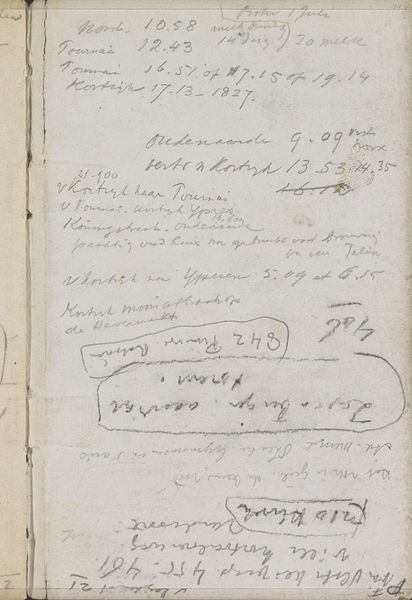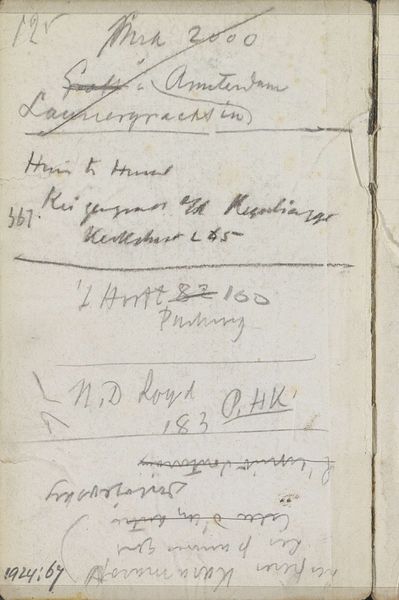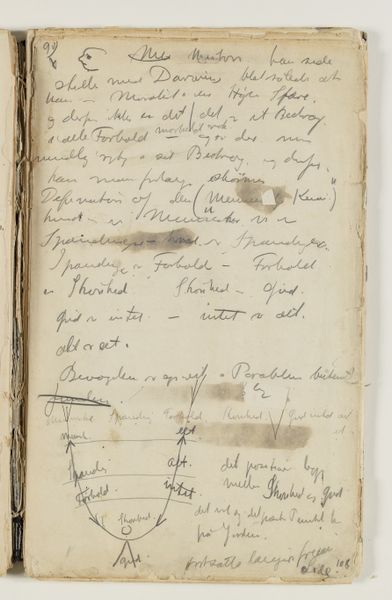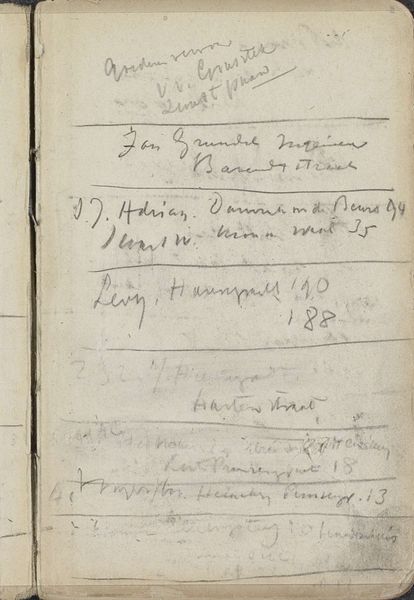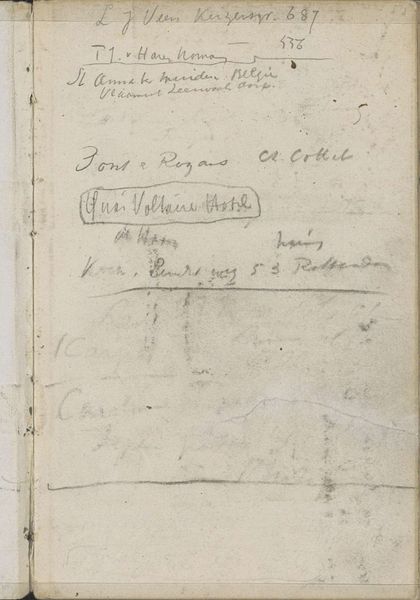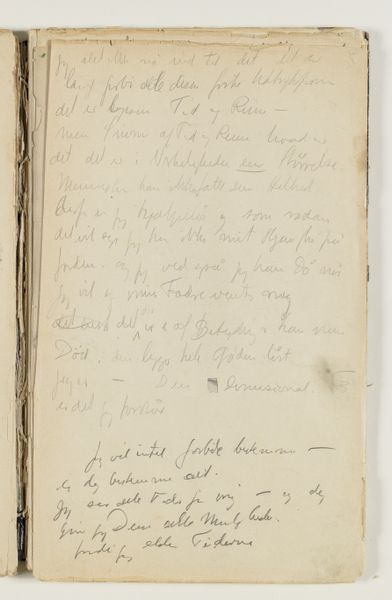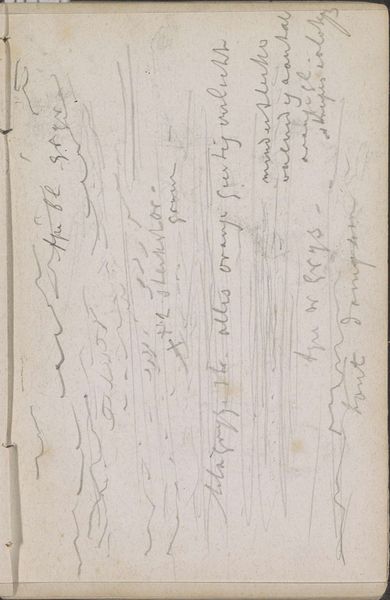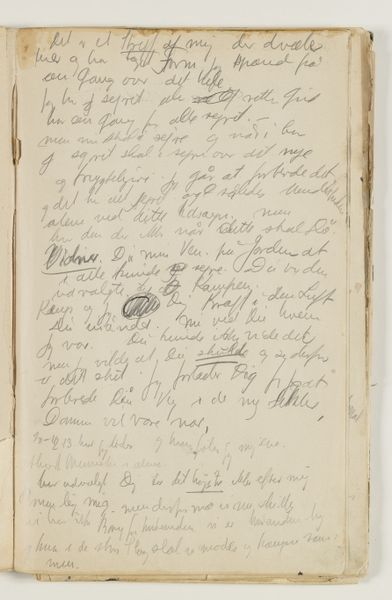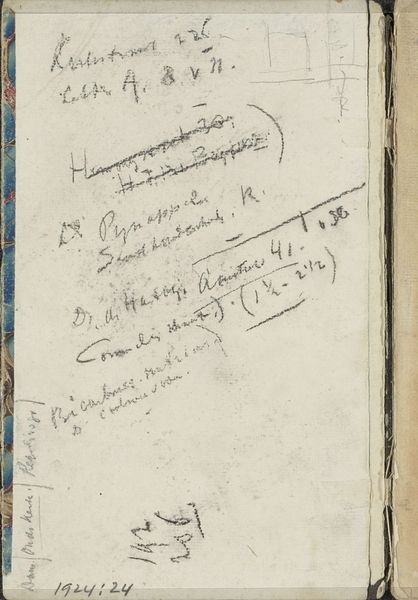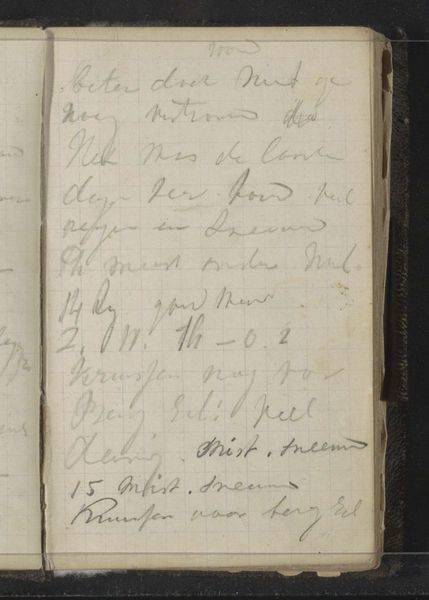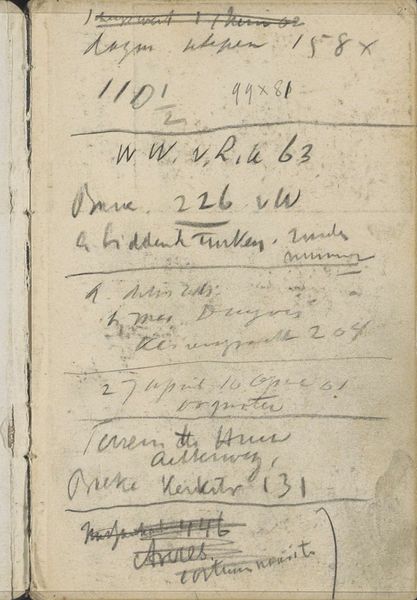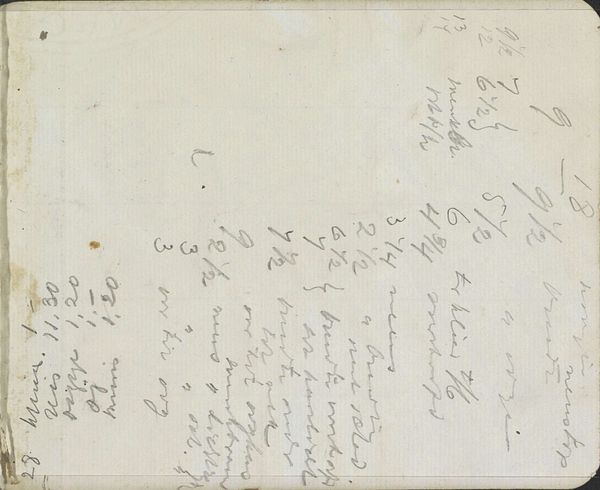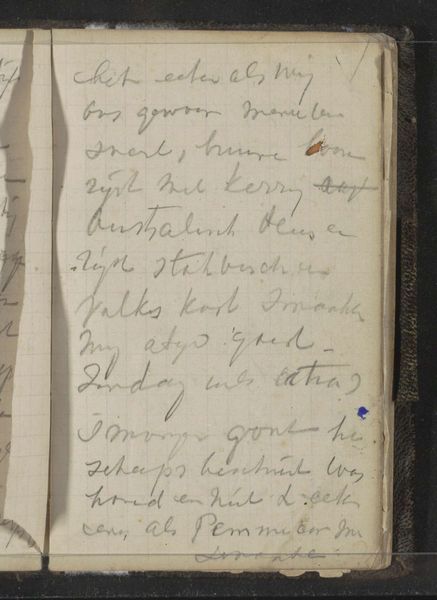
Copyright: Rijks Museum: Open Domain
Curator: Here we have "Annotaties," a page of notations, dating from around 1902 to 1914, created by George Hendrik Breitner. It’s ink and coloured pencil on paper, and you can find it here at the Rijksmuseum. Editor: At first glance, I’m struck by its dense texture—the layering of script creates a visual rhythm. It reminds me of someone's private thoughts, barely contained. Curator: Breitner, known for his street scenes and his 'cityscape portraits' of Amsterdam, often used notebooks to jot down ideas, addresses, and expenses. These weren't always intended as finished pieces, but glimpses into his process. Do you see any emerging cultural references within the notation, as I'm particularly fascinated by cultural artifacts. Editor: Indeed, the structure itself tells a story. The way the writing overlays suggests an urgency. Also, notice the ruled lines; they try to contain the scribbles, but the energy spills over. Curator: The visual chaos makes sense if we think of these notations as Breitner attempting to capture ephemeral experiences. The details—addresses, perhaps reminders—serve as anchors connecting the artwork to the pulse of life he observed in Amsterdam. The impression is one of vibrant movement—almost chaotic movement—akin to a visual stream-of-consciousness, no? Editor: Definitely, the formal repetition evokes a kind of urban rhythm that resonates perfectly with Impressionist art; however, the scale adds another dimension. Curator: It offers an unusual contrast; typically, a work on paper prompts associations with sketching—intimate scales where line, composition, and the gesture become paramount. But Breitner pushes it in another direction—offering visual insight into his professional, even day-to-day, concerns, yet simultaneously using ink to express some kind of personal connection with the external world that surrounds him, through text, addresses and other personal concerns. Editor: Absolutely. These "Annotations" demonstrate the emotional charge we often associate with script—perhaps an aesthetic of the unfinished, and, importantly, how it informs, for the modern viewer, the act of its original composition. Curator: And so, perhaps we're left with is a potent testament to the ordinary origins of artistic inspiration. Editor: Precisely, thank you for guiding my appreciation, a fresh way to regard the creative act.
Comments
No comments
Be the first to comment and join the conversation on the ultimate creative platform.
